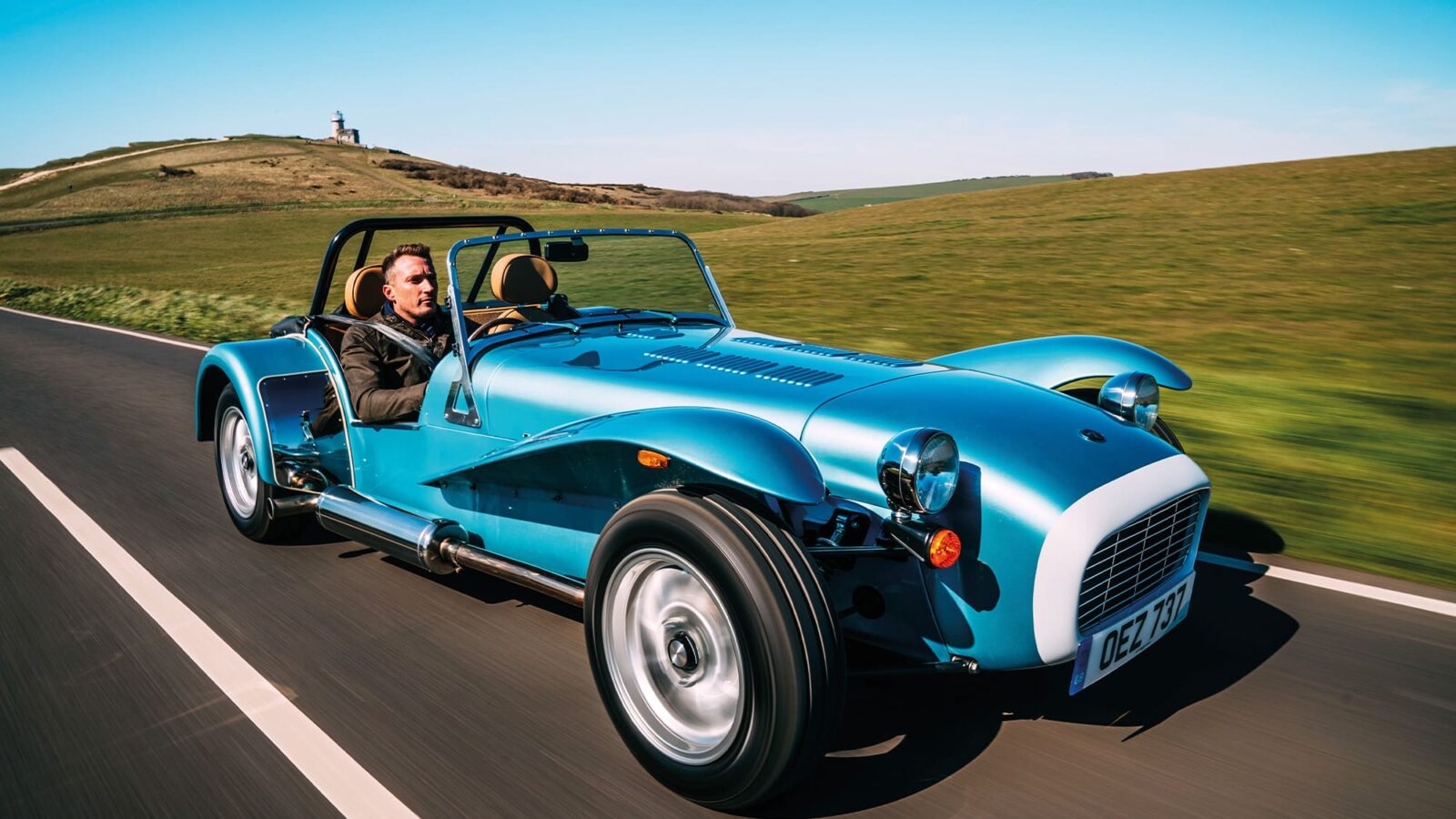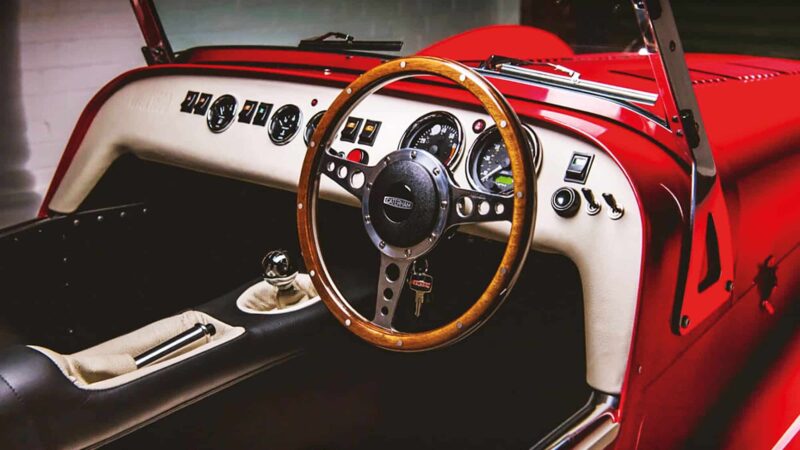Caterham Super Seven 1600 review: Analogue wonderland
In a world controlled by modern gadgetry, is there still room for the humble Caterham Seven? Andrew Frankel says... absolutely!

Caterham Super Seven
Just before I got a job driving cars, I bought a Caterham Seven. In retrospect it would have been better if I’d waited and actually learned how to drive the bloody thing. This was about 1987 and the car was a red Super Sprint with a 135bhp four-cylinder Ford engine breathing air through two K&N air filters that stuck out of the side of the bonnet. I loved that car even though I didn’t know how to drive it, as I found out when I reversed it into the bank at the exit of the Goodwood chicane on my first ever track day.
It wasn’t quite written off (which was more than could be said for my helmet which split wide open on the little roll bar) but I couldn’t afford to repair it so sold the wreck back to Caterham for buttons. Wind forward 33 years and I’m back in another little Caterham, also powered by a 135bhp four-cylinder Ford engine, with those filters still standing proud of the bonnet. But this is not some classic car intended to fling me down memory lane, it’s a brand-new product.
It’s called the Super Seven and like 2017’s SuperSprint, is designed to recall Caterhams of yore. Unlike the SuperSprint which existed to celebrate the Seven’s 60th birthday and which was therefore limited to just 60 units that sold out in seven hours flat, the Super Seven is a standard production model. But it comes with those lovely touring wings, a rear- mounted spare wheel, Smiths instruments and a Moto-Lita wood-rimmed wheel. And in the place of my old 1.7-litre pushrod Kent crossflow motor sits a new twin-cam 1.6-litre Sigma unit (though its design has been knocking about in one form or another for the last 25 years), its K&Ns attached not to twin Weber carbs as per my old car, but Jenvey throttle bodies instead.
It has been years, possibly decades, since I last drove a Caterham with so little power. All those I’ve driven recently seem to have been top-spec supercharged lunatics that try to pull you out through the back of the car every time you put your foot down. This one would be very different.
And it was: exquisitely different. If you ever wondered how tenuous was the relationship between fast and fun, one drive in this and you’d wonder no more. The way Caterham has preserved the essence of this car down the ages speaks volumes for both its original design and the skill with which it has been developed. Whereas a Morgan 4/4 felt like a quaint old nail until it was finally put out of its misery earlier this year, the feel of this least powerful of modern Sevens is instantly enticing and thrilling despite its relative paucity of power. The car feels stiff and you feel superbly located within it, slotted into that low-slung narrow channel that leads down to its perfectly positioned pedals.
I love, too, the way the switchgear is so simple, with everything you need during normal driving – indicators, wipers, flashers, horn and so on – operable with no more than an extended finger. It adds to that sense of purpose and immediacy.

Everything has been designed for sheer simplicity, from the dash and dials to the classy steering wheel
And that is what it is all about. The Super Seven is one of those cars that reminds you why you fell in love with driving in the first place. It takes all the best driving sensations and boils them down to a concentrated shot with all the slack and vagueness removed. Because it is so accurate and immediate, driving it becomes a partly subliminal experience. You may not be aware of it, but we’re always correcting and making allowances for modern cars because their weight, size and softness means they respond only in an approximate manner. The Seven always does what you ask it and goes where you point it the instant the instruction has left your limbs.
But its charm extends far further than that. More technically the feel of its steering, the action of its gearbox and the weightings of its pedals are beyond serious criticism. It’s not just some light little thing, it is a beautifully engineered and deftly judged car, too. And perhaps most of all because it is so usable. Yes, I mean it. I took it to the mountains for obvious reasons and after a few hours of fun the skies darkened and the heavens opened. So I drove home with the roof up, heater on, screen electrically demisted, snug, dry and as happy as could be. I love Ariel Atoms, but they can’t do that. The Seven even has some stowage space behind the seats.
Sadly however it is terribly expensive: £33,495 if you have no extras and don’t mind building it yourself. You could turn that into a £40,000 bill easily, which is lot to pay for such a small and simple car. Unless of course you take the view that it’s not very much at all for one of the finest driving machines you can buy for any amount of money; not the fastest, but that’s got very little to do with it.
There was a time about 25 years ago when Caterham feared the Seven would simply become an outdated relic – it’s why they tried to make a modern car resulting in the near stillborn Caterham 21. In fact history has proven quite the reverse: in these days of high and heavy, turbocharged, paddle-shifted, all-wheel-drive cars micro-managed to the nth degree by electronic units, the Seven stands today in stark relief, a beacon of how a proper driver’s car should perform and feel.
Caterham Super Seven 1600 statistics
- Price £33,495 (kit form)
- Engine 1.6 litres, 4 cylinders
- Power 135bhp
- Weight 540kg
- Torque 122lb ft
- Power to weight 250bhp per tonne
- Transmission Five-speed manual, rear-wheel drive
- 0-62mph 5.0sec
- Top speed 122mph
- Economy n/a
- CO2 n/a
- Verdict Takes you back to why you fell in love with driving. Superb.
